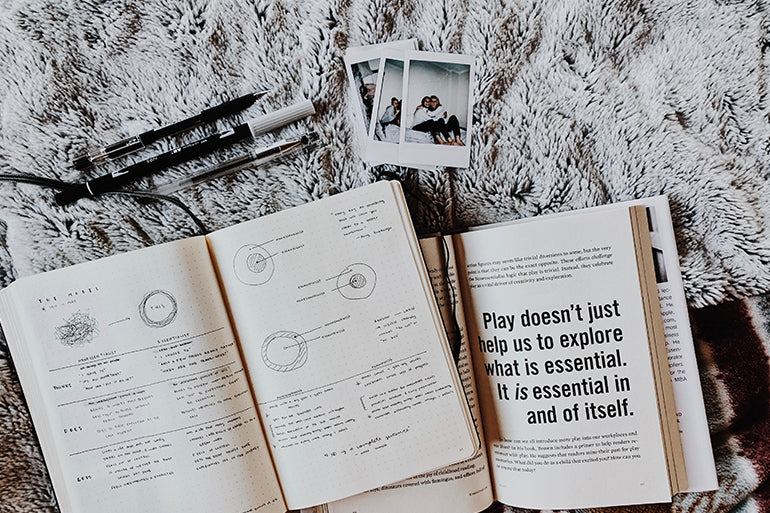
Begging for BuJo: The Bullet Journal Craze
Imagine the tactile feel of a new journal in your hands, the crisp smell of the silky paper, the feeling of a pen nib dragging across the page.
While we live in a digital world, many of us prefer the analog feeling of a journal or a planner in our hands. Sure, you can keep pretty much any note or appointment kept safe on your phone or computer, but there’s something
Bullet
What is BuJo ?
Bullet
In Carroll’s own words, the purpose of
Your bullet journal can be a place to record your thoughts, doodle, jot down ideas, plan for the future, keep appointments, make weekly/monthly calendars, and much more.
Read This Next: Written Emotions: How
How to Start a Bullet Journal
The first thing you’ll need is the motivation and drive to start bullet
Set your intentions for your
The second thing you’ll need is the actual journal. My favorite bullet journals are the A5 Dot Grid journals offered by Archer & Olive.
There are many covers to choose from, and you can even decide between white or black paper—a refreshing option for those of us who love our pastel gel pens. You can also find many dot grid journals on Amazon. The only stipulation for creating a bullet journal is the dot grid pattern that allows you to create different templates and patterns.
And
Once you’ve gathered your supplies, you’re ready to dive into what makes bullet

The Contents
There are four basic components to any bullet journal: the index, collections, rapid logging, and migration.
1. Index
The index is basically your table of contents. In order for this system to work,
2. Collections
There are three basic collections for any bullet journal: the future log, the monthly log, and the daily log.
You can set these pages up however you’d like, but there are some basic designs that many people stick to. These logs are where you’ll keep track of events, goals, and appointments.
You can also include lists and logs in your collections. Lists might include your favorite movies, books, or albums. Logs would keep track of things like what you’re grateful for your sleeping habits.
Your collections might also include sketches or doodles, or pages for mixed media art and collage.
3. Rapid Logging
Rapid logging
Bullets are
There are four symbols most commonly used in rapid logging:
•
>
<
Signifiers add additional information about your bulleted tasks, such as using “$” to
4. Migration
Migration is one of the most important aspects of bujo. Migration involves the transfer of an unfinished task from one collection to another.
This action takes place at the end of the month when you are creating your next monthly log. Simply take note of the tasks that have yet to be completed and transfer them to your next month’s schedule. This is where the handy bullets and signifiers can help you keep track of the tasks that have been migrated.

5. Get Creative
Half of the reason why people are obsessed with bujo is the creative aspect of it. You can spend hours on Pinterest looking at creative layouts in their journals that involve beautiful penmanship, gorgeous vision drawings, and stunningly sleek planing outlines.
The best part about it is that it is unique to you. It’s a creative outlet that helps you express yourself and get organized all at the same time. How beautiful is that?
Additional Tips
Whenever a new collection is created, simply add it to the index.
When rapid logging, start with bullets and add signifiers next to them if needed.
Migration should take place on a monthly basis—no need to do this every day or even every week.
The Learning Curve
Once you get the hang of it, bullet journaling is an easy and extremely efficient method for planning and logging the events in your life. However, getting started can seem overwhelming. If you need an additional boost to help you feel confident beginning your bujo journey, check out this quick tutorial video, made by the creator of bullet journaling himself, Ryder Carroll.
We recommend getting some fun writing tools and highlighters to make your bujo unique to you. Once you feel ready to get started, you might have a hard time putting the pen down. Happy bujo-ing!
Related Article: Colour Me Calm: Why You Need A Coloring Book






